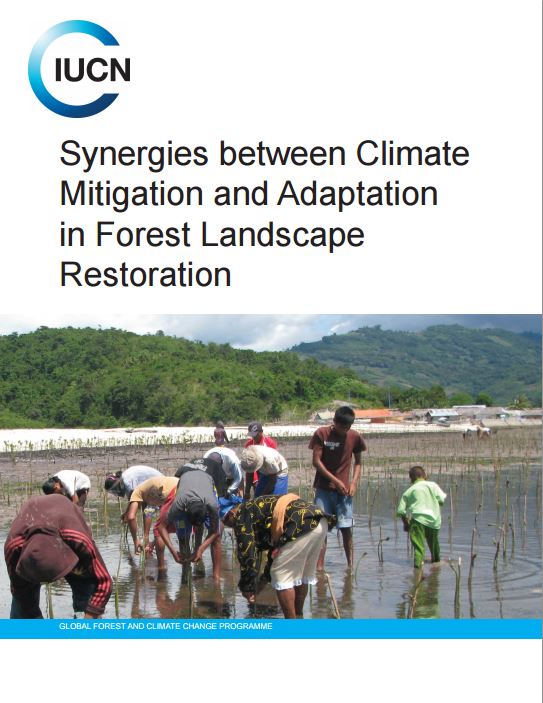Synergies between climate mitigation and adaptation in forest landscape restoration.
The two responses to climate change - mitigating emissions and adapting to impacts - are often pursued as separate actions. But some ecosystem-based responses, like forest landscape restoration, can serve as both mitigation and adaptation tools. A new report from IUCN examines where and how restoration can serve mitigation and adaptation goals across the world and in key countries.

Photo: IUCN
Nearly every country in the world must now work to not only fight climate change by mitigating emissions of greenhouse gases but also to adapt to the consequences of an already changing global climate. This is the consensus of the latest report from the Intergovermental Panel on Climate Change and the United States government’s National Climate Assessment.
As countries prepare their plans for contributing to post-2020 climate actions under a new international climate agreement, many are focused on mitigating and adapting through separate actions. However, many nature-based responses can simultaneously achieve mitigation and adaptation goals. Forest Landscape Restoration, a long-term process of regaining ecological integrity and enhancing human well-being in degraded and deforested lands represents one such response. Restored landscapes are climate resilient ones, which can often provide livelihoods, food, energy and water security while simultaneously removing carbon from the atmosphere.
In advance of the next round of climate negotiations, a new report from IUCN makes the case for forest landscape restoration as an approach for mitigation and adaptation. This report examines the linkages between adaptation and mitigation at the global policy level with an eye towards identifying where restoration can play a role in bridging both. Through case studies in seven priority countries (including India, Kenya, Uganda, Rwanda, Vietnam, El Salvador and Mexico) the report also examines how restoration can serve national goals on mitigation and adaptation in places where such activities are most critical. The report concludes with recommendations for integrated mitigation-adaptation options at international and national policy levels.



